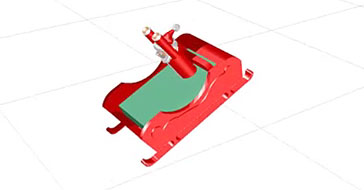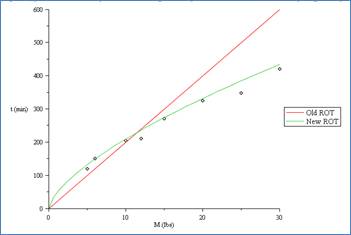Simulating santa and deriving the cooking time for a turkey using Maple
Maplesoft have been getting into the Christmas spirit recently with a few festive demonstrations. The first uses MapleSim (essentially Maple’s answer to Simulink) to simulate Santa in flight. Of course it is highly simplified since, among other things, the model doesn’t simulate the weight of the presents which will (obviously) be steadily decreasing throughout Christmas Eve. It is, however, a great start.
Slightly more practically, they have used Maple to derive a new rule of thumb for the cooking time of turkeys. The traditional rule of thumb is to allow 20 minutes per pound of turkey if you cook at 350° F (after pre-heating to 400° F) although there is a variation to this rule that suggests adding an extra 15 minutes to the final cooking time. According to Maplesoft’s analysis, this is great if your turkey is somewhere between 9 and 14 pounds in weight but if you use it to cook larger turkeys then you may find that the result is overcooked and dry.
After a bit of analysis, Maplesoft have suggested that if the weight of your turkey is x pounds then the ideal cooking time is 45*x^(2/3) minutes. So, using the new rule on a 10 pound turkey gives 45*10^(2/3) = (approx) 209 minutes compared to 200 minutes using the old rule – not much difference there then.
On a 20 pound turkey, however, the difference is more pronounced: 400 minutes using the old rule but 332 minutes using the new rule! Now, the Maple engineer who derived this equation admits that he hasn’t tried it out in the kitchen yet but he will do so this Christmas and I think that I might try it too if I get the chance. If you are a cook and have tried this new formula for large turkeys then let me know how you got on.
Please consider this formula to be experimental for now though and CHECK that your turkey is cooked before eating it. Remember that the equation hasn’t been checked in the kitchen yet!
For more examples of festive mathematical programs created with software such as Mathematica, Maple, MATLAB and SAGE check out the following links.



I guess this 2/3 law is based on dimensional analysis using the Buckingham π theorem? However ‘m not sure about the 2/3. I would guess 1/2, however we are working here with a `spherical’ object heated from the outside, so that would increase the exponent as the heatflux gets `focused’. If i find some time, I will try to do the dimensional analysis in spherical coordinate system.